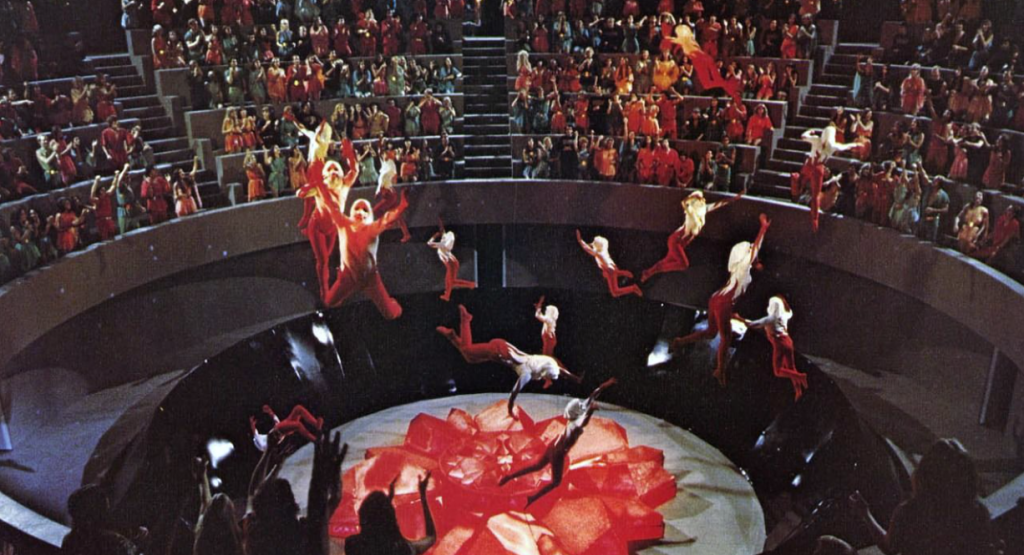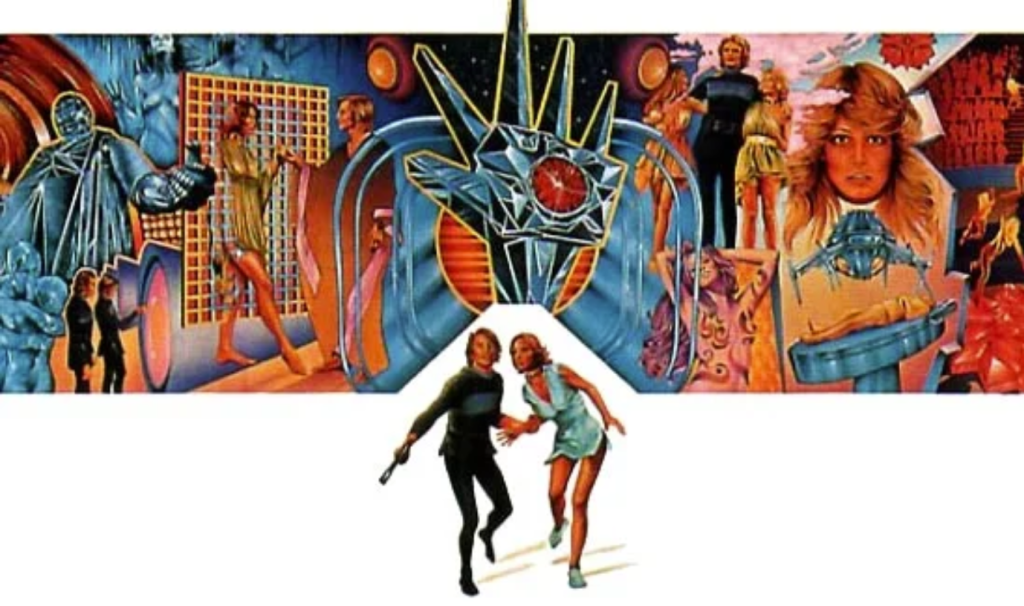
In the futuristic world of Logan’s Run (1976), humanity – or at least that portion of humanity that the movie is concerned with – is sequestered away from the unknown “world outside”, living and dying inside vast Xanadu-like pleasure domes. Their lives and deaths are supervised by an AI who ensures that they want for nothing but imposes a strict limit; no citizen may live beyond the age of 30.
To enforce compliance, each citizen is implanted at birth with a lifeclock – a crystal embedded in their right palm that changes color every ten years. At 30, the crystal turns black.
Most people living in the Domes accept this as the natural order, but a few rebel, insisting that they can and should be able to live much longer. They become Runners, attempting to escape to Sanctuary, a mythical place in the unknown world outside the Domes. Runners are pursued by Deep Sleep Agents, a.k.a. Sandmen, such as protagonist Logan 5 (played by Michael York) – highly trained, state-sanctioned assassins and enforcers of what may be their society’s only actual law.

In the original 1967 novel that inspired the movie, citizens whose lifeclocks turn black must report to state-supported euthanasia boutiques called Sleepshops as a matter of cultural tradition and civic duty. Here’s a description from the novel:
Logan thought of the Sleepshops with their gaily painted interiors, the attendants in soft pastel robes, the electronically augmented angel choirs, the skin spray of Hallucinogen, which wiped away a confused look of suffering and replaced it with a fixed and joyful smile. He thought of the quiet, dimlit grave room lined with aluminum shelving, and of the neat rows of steelfoil canisters marked with the names and numbers of men.
When Logan himself is forced to run, teaming up with a Runner named Jessica 6 (Jenny Agutter), the scene is set for a dramatic chase through uncharted terrain in their quest for Sanctuary, as they are pursued by Logan’s former friend and collague, the fanatical Sandman Francis 7 (Richard Jordan).
Logan’s Run was quickly optioned for a movie adaptation and some test film was shot, including a scene set in a Sleepshop. The production stalled, however, and by the early 1970s it appeared that it would not go ahead. The dramatic potential of the Sleepshop footage then inspired the producers of the 1973 movie Soylent Green, itself an adaptation of Harry Harrison’s dystopian novel Make Room! Make Room!

Set in a catastrophically overcrowded New York City during the year 2022, Soylent Green posits social collapse when the ecological devastation of America’s rural and wilderness areas forces huge numbers of refugees into increasingly packed urban centers. Food riots are daily occurrences and government-sponsored euthanatoria – known as “Homes ”– offer a peaceful and dignified exit to any citizen who asks.
In the full context of the movie’s storyline, Homes turn out to be sinister places because – spoiler – the government is secretly recycling humans as food. Divorced from that sci-fi gimmick and considered as a model of aesthetic ritual and human agency, however, there are many worse ways to go than the ceremony depicted in this abridged clip, showing the final moments of Edward G. Robinson’s character Sol Roth:
This scene is afforded a special poignancy by the fact that Robinson was nearing the end of his own life, and died two weeks after filming Soylent Green.
When the film adaptation of Logan’s Run re-entered production about a year after Soylent Green was released, the producers were – ironically – faced with the challenge of representing state-sanctioned euthanasia in a way that wouldn’t simply read as mimicking Soylent Green‘s “Going Home” ritual. Their solution was to replace the Sleepshop concept with a bizarre ceremonial form of euthanasia by levitation and then vaporization within a public thanatorium/arena known as known as Carrousel:
Participation in Carrousel is believed to offer at least the chance of “Renewal”, which is a kind of supernatural reincarnation. Thus, the ritual spectacle of Carrousel functions essentially as the civic, secular religious cult of the Domes. However, as Logan and Jessica discover in their quest to reach Sanctuary, Carrousel is, in fact, doubly dystopian; not only can humans live far beyond the age of 30, but the promised chance of Renewal is also a lie. The Citizens have been duped into willingly participating in and cheering on a form of mass population control disguised as a religious ceremony.
